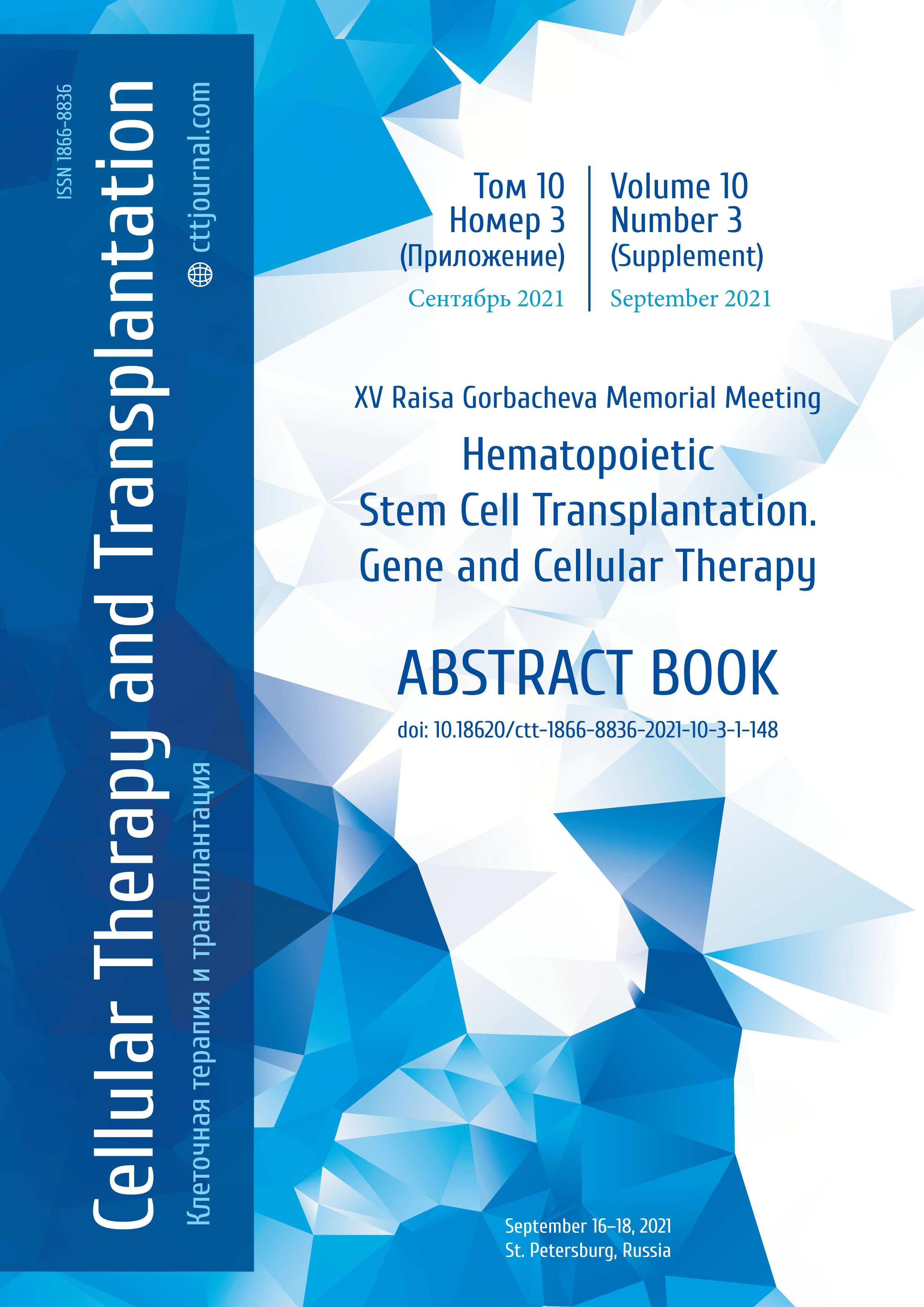PC-04. Complications of central venous catheters in patients undergoing hematopoietic stem cell transplantation in Armenia
Taguhi J. Hovhannisyan1,2, Mane S. Gizhlaryan1,3, Armine H. Farmazyan2, Mira V. Saaryan2, Yervand K. Hakobyan2, Inga V. Khalatyan1,2, Lusine M. Krmoyan1,2, Mariam N. Fahradyan1,2, Vahe A. Mailyan4, Davit N. Dallaqyan4, Medea G. Anastasiadi1,2, Gevorg N. Tamamyan1,3, Samvel H. Danielyan4, Karen H. Meliksetyan2
1 Pediatric Cancer and Blood Disorders Center of Armenia, Prof. R. H. Yeolyan Hematology Cente, Yerevan, Armenia
2 Prof. R. H. Yeolyan Hematopoietic Stem Cell Transplant Department, Hematology Center, Yerevan, Armenia
3 Department
of Pediatric Oncology and Hematology, Yerevan State Medical University, Yerevan, Armenia
4 Hematology Center After Prof. R. H. Yeolyan, Yerevan, Armenia
Correspondence:
Taguhi J. Hovhannisyan, e-mail: taguhi.hovhannisyan.81@mail.ru
Summary
Central venous catheters (CVCs) are an important component of bone marrow transplantation (BMT) for chemotherapy, parenteral nutrition (PN), and blood infusion. Long-term CVC access is associated with an increased risk of infection and device dysfunction.
Materials and methods
Medical records of thirty-nine patients are reviewed and analyzed to track catheter-related complications in the Bone Marrow Transplantation Department of R. H. Yeolyan Hematology Center, Yerevan, Armenia. Examination of the central line was done daily. CVL dressing was replaced every day for non-tunneled catheters, and every third day for tunneled catheters. Transparent dressing (Tegaderm) was used to dress central lines. A 2% chlorhexidine-soaked cotton swab and 70% alcohol were used for at least 30 seconds to disinfect on and around the catheter. Both types of CVLs were flushed with 2.5 ml of heparinized saline (10 u/ml) twice a daily.
Results
12 children (the median age 6 years, age range [2-16] years) and 27 adults (the median age – 41 years, range [19-60] years), underwent HSCT. 2 (5.1%) pediatric patients with sickle cell anemia underwent allogeneic hematopoietic stem cell transplantation. A single-lumen Hickman tunneled catheter was placed in 2 (5.1%) patients. A double-lumen non-tunneled catheter was placed in the rest of the patients 37 (94.9%). 4 (10%) children developed complications; 2 central line-associated bloodstream infections, 1 pneumothorax, and 1 local hematoma. 5 (12%) adult patients developed a catheter-associated infection. In 37 patients, CVL was removed to a platelet count >50000/mcL, and in 2 patients a platelet count <20000/mcL. No episodes of bleeding were reported. 7 patients were febrile at the time of CVL removal, of whom 5 become afebrile within and 2 patients needed a change of antibiotics. Positive blood cultures were found in the CVLs of 7 patients, 5 of whom became afebrile within 2 days of line removal.
Conclusions
The first transplant was conducted in 2018 and here we reported CVL associated complications of our first 39 patients. CVC-associated complications are frequent during HSCT and nursing care is an ascension component of HSCT.
Keywords
CVL, CVC, bone marrow transplantation, Armenia, developing countries.


